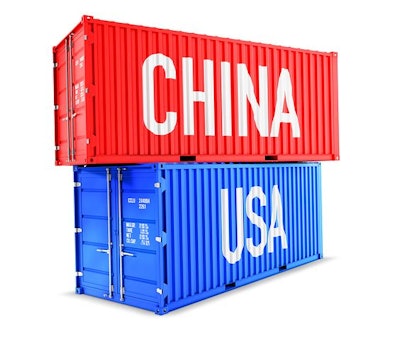
GMO Crops Remains At Sticking Point In U.S./Chinese Negotiations
As the U.S. and Chinese trade delegates meet in Washington for continuing negotiations, China’s position in allowing more GMO crops has surfaced as a recent concern for U.S. agriculture.
Currently, China has a multi-year approval process for GMO imports.
The issue has been a source of tension between the two countries for years. China is the biggest buyer of U.S. soybeans, the bulk of which are genetically modified. If China does not approve new strains, then farmers in the United States cannot plant them because China may reject shipments.
Seed companies cannot fully commercialize sales of new strains without those approvals. The two sides had appeared to make some progress on the issue in January, when China approved a handful of GMO crops for import. They were the first in about 18 months. The move did not address the core U.S. concerns over delays to the process.
Beijing allows imports of GMO soybeans and corn for use in animal feed, even though it does not permit planting of them.
Beijing promised to speed up its review of applications during previous trade talks with the United States in 2017. In the past, Beijing has held back approvals of imported GMO products amid concerns about anti-GMO sentiment in China.
What It Means for the U.S. Farmer: This development of China’s GMO approval process is critical for the future of U.S. exports of grains and oilseeds. China’s recent approval of 4 corn and 2 soybean varieties in January was a positive step but the U.S. farmer and the future of the global agricultural supply chain depends on China working with the U.S. This one point has major economic ramifications for the U.S. agri-industry.
USDA’s April WASDE Estimates: Ending Stocks Increasing
Reuters analyst pool for the April WASDE has ending stocks for corn, soybeans and wheat all increasing.
The increases are not a surprise as the USDA’s March 1 stocks report showed higher than estimated stocks signaling a sluggish demand environment.
Corn: Expect the USDA to lower feed and residual use with a possible adjustment to the exports. March exports have not been encouraging.
Soybean: Analysts see the USDA making minor modifications to the balance sheet that would have the carryout slightly higher to unchanged.
Wheat: Adjustments at the by-class level will be interesting. Possible lowering of the HRS and SRW exports. With less than 60 days in the wheat marketing year, expect any adjustments to be close to the government’s final assumptions for the 18/19 marketing year. What It Means for the U.S. Farmer: In general, growing carry-outs are not supportive of futures prices. But most of the negative sentiment seemed to play out in the price of the futures market last Friday, March 29. Barring an outlier in the WASDE, the futures markets feel ready to look absorb the information and start focusing on planting and U.S./Chinese trade.
The risk of trading futures, hedging, and speculating can be substantial. FBN BR LLC (NFA ID: 0508695)










